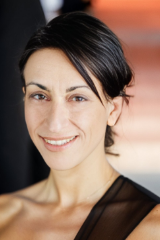Cancer research
AI model generates virtual staining of cancer tissue
Researchers from Bern and Lausanne are making progress in the analysis and diagnosis of cancer. They have developed an AI model that allows virtual staining of cancer tissue, complementing experimental data.

Researchers often only have limited tissue material available to obtain information about the disease status of cancer patients. To obtain this information, they previously had to stain cancerous tissue in the laboratory with specific dyes. Depending on the staining, certain characteristics or molecules - known as markers - can be visualized within the tissue. However, laboratory analysis of markers is labor-intensive and experimental staining is sometimes not possible for technical or logistical reasons. As a result, important information that could help diagnose and treat cancer, such as abnormal cell growth or changes in cell nucleus size, is missing.
To overcome this shortcoming, researchers from the Universities of Lausanne and Bern have developed a model, the "VirtualMultiplexer", which uses artificial intelligence (AI) to mimic such stainings. The results of their work were recently published in Nature Machine Intelligence.
Virtual staining supports cancer diagnosis
"To understand the underlying method, you can imagine a mobile phone app that predicts what a young person will look like at older age," explains Marianna Rapsomaniki, Head of the AI/ML group for biomedicine at the Biomedical Data Science Centre (BDSC) of the University of Lausanne and Lausanne University Hospital. Based on a current photo, the app produces a virtual image that simulates the person's future appearance. This is done by processing information from thousands of images of other, unrelated, older people. "Similarly, the VirtualMultiplexer uses a colored tissue image to create virtual versions that show which markers characterize this tissue," says Rapsomaniki. Once the VirtualMultiplexer has learnt which logic is used to color the tissue, it is able to apply the same "style" to a particular tissue image. What is particularly interesting is that a single actual staining is sufficient to simulate virtual staining for different markers.
About the person

Marianna Rapsomaniki
Prof. Dr. Marianna Rapsomaniki ist Gruppenleiterin der Abteilung Künstliche Intelligenz/Machine Learning für Biomedizin am Biomedical Data Science Center (BDSC) der Universität Lausanne und Universitätsspital Lausanne.
Kontakt
E-Mail: Marianna.rapsomaniki@chuv.ch
Efficacy and clinical relevance
Through a rigorous validation process, the researchers ensured that the virtual staining provided clinically relevant results. "We were able to show in tests that these images predict the progression of the disease and the survival of patients just as well as real staining," explains Marianna Kruithof-de Julio, Head of Research at the Department of Urology at Inselspital and the Department for BioMedical Research (DBMR) at the University of Bern, and co-author of the study. They were also able to show that the human experts were almost unable to distinguish the artificial images from the real images, demonstrating the effectiveness of the model.
Future potential for various types of cancer
Kruithof-de Julio sees great potential for future applications: "We developed the tool using tissue from prostate cancer patients. In the study, we were able to show that it works similarly well for pancreatic cancer. This gives us confidence that the tool can also be useful for many other diseases."
About the person

Marianna Kruithof-de Julio
Prof. Dr Marianna Kruithof-de Julio is Head of Research at the Department of Urology, Inselspital Bern and Head of the Translational Organoid Models Unit at the Department for BioMedical Research (DBMR) at the University of Bern.
Contact
E-Mail: Marianna.kruithofdejulio@unibe.ch
Press release from the University of Bern
Generative AI enables clinical predictions in cancer
Subscribe to the uniAKTUELL newsletter

Discover stories about the research at the University of Bern and the people behind it.